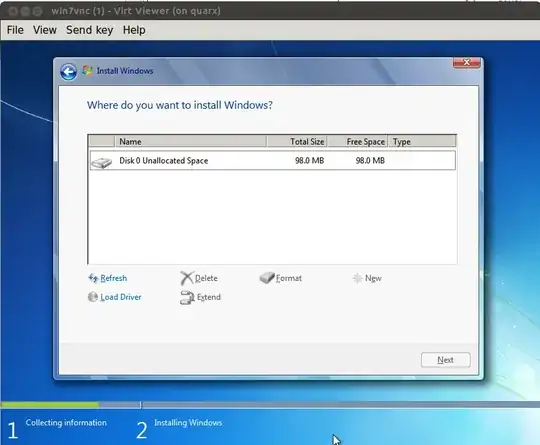I am trying to install windows 7 64bit as a kvm guest. I read here that I should install the virtio scsi driver during installation.
I use virt-install to start my installation from the command line
virt-install --connect qemu:///system \
--name win7vnc --ram 2048 --vcpus=2 --cpuset=auto \
--disk path=win7.img,bus=virtio
--network=network=default,model=virtio,mac=RANDOM
--graphics vnc,port=5900
--disk device=cdrom,path=../../isos/virtio-win-0.1-81.iso
--disk device=cdrom,path=../../isos/win7_sp1_ult_64bit/Windows\ 7\ SP1\ Ultimate\ \(64\ Bit\).iso
--os-type=windows --os-variant=win7 --boot cdrom,hd
The installation start fine and as expected windows do not detect a hard disk. So I load driver and the disk is indeed detected. The problem is it only has 99MB capacity, while I created the disk to be 100GB with the command
qemu-img create -f qcow2 win7.img 100G
what could be wrong and the capacity is not correct?
EDIT: picture of the problem
